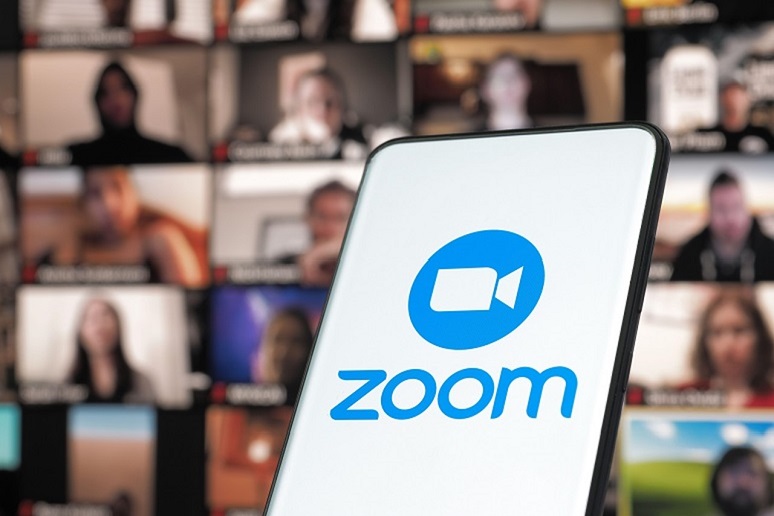Among the fusillade of announcements coming out of Zoomtopia 2022 were three that focused on Zoom's chat capabilities: the ability of any chats generated in a meeting to be accessed via a general team chat; expanded AI-generated real-time chat translations; and the ability to schedule future chat messages.
The chat integration means that every scheduled meeting creates a new group chat (unless its recurring), and meeting invitees are able to access that chat via the Teams Chat platform. Previously, meeting attendees could save a text file of the in-meeting chat if that capability was enabled by an admin. For Zoom users, this means, "Never worry about following up and asking for links shared in meetings," according to the company’s announcement.
The increased translation capabilities will support 12 languages: English, Chinese (simplified), Dutch, French, German, Italian, Japanese, Korean, Portuguese, Russian, Spanish, and Ukrainian. The company also announced future support plans for another 16 languages: Arabic (MSA), Chinese (traditional), Czech, Estonian, Finnish, French (Canadian), Hindi, Hungarian, Indonesian, Polish, Malay, Romanian, Tagalog, Tamil, Turkish, Vietnamese.
During the keynote, both the translation and message-scheduling capabilities were positioned as tools that could assist a global workforce in communicating across language barriers and time zones.
WorkSpace Connect had the opportunity to talk with Sharvari Nerurkar, the head of Zoom Chat Product, about how her team identifies must-add features, how Zoom thinks of attention as a limited resource and the importance of staying in touch with your end users.
Below is an edited transcript of our conversation.
Q. With the Zoom Chat features introduced or announced in the keynote—can you tell me which of those sprang from the conversations or requests you've had from clients?
A. So, the most important one is the meeting chat and team chat coming together. It has been our number one feedback item for the last several years, where either people who join the meeting late or who can't make it to the meeting, want to know what happened in the meeting, or look at what the (post-meeting) action items were or look at even the agenda before joining the meeting, like do I even need to be here? That's something a lot of customers have even messaged me, like today to say hey, when can this be turned on for my account?
The other one, which may not be direct feedback but it's more about a global workforce, is having translation. It was the obvious next step to sort of bring it to team chat so that you can express yourself in the language you're most comfortable with but still be able to connect with your colleagues.
Q. Translation seems tremendously daunting because you're trying to convey thoughts accurately and expressively, and idioms change from language to language, as do levels of formality. How has your team been able to identify what some of these obstacles are, and work with your tech folks to address those obstacles so that you don't have an automatically generated translation that inadvertently loses people deals?
A. If you look at the translation landscape or just AI in general, maybe 10 years ago, it was daunting, but now with the progress that AI has made—we have a very strong AI team—and we had our
Kites acquisition last year, so it's just like rock star AI. Typically, the team has access to a lot of data on the Internet that is used to train these models. So, I feel very confident about our translation. You can see it's pretty much bang on even with idioms.
Q. What is the Activity Center, and what prompted its development?
A. I think with hybrid work, there is so much coming at us, right? You're getting emails, you're getting chatted, you're getting at-mentioned—you're getting it all. There's so much coming at you, and you're missing an email or meeting invite. So what is that one way that you can stay on top of the—to use a previous terminology—your inbox? Zoom Activity Center helps you stay on top of your most important notifications because it puts them all in one place. It's not just chat-based—if you miss a call or you missed a meeting, then this is where you can stay on top of it. You need that overall way to keep on top of things like who needs my attention and how do I triage it?
Q. At the keynote, meeting summaries were mentioned as well. What is your team's approach to helping your customers manage attention as a resource?
A. Time and attention are the one resources that we have limits on. We talk to our customers a lot and we brainstorm internally, because the best part about Zoom is we use our own products. On Zoom meetings, we run on Zoom chat, we run on Zoom phone, right? So even before we hear something from the customers, most likely we have encountered it ourselves.
Q. But not all customers are going to always work the same way that people who developed the tools do. So how do you check to make sure that you're building a tool that can accommodate multiple ways of working?
A. Each person on my team takes at least one customer meeting a week. We are talking to customers one on one—before the onboard, during the onboarding, and then we have checkpoints after the onboard. Like: We know you love us, but what could be better or working differently?
We have an excellent customer advisory board—very supportive and honest with us, so we get early feedback. And we talk to end users as well as IT admins because both of them are the key sponsors when a product needs to be rolled out. So, we rely a lot on feedback. We have some level of aggregate very high-level product data as well.
Q. When you say aggregate product data, it's from customers, but it's aggregated and anonymized?
A. Yes—we can see vendor outages, for example. We know from our service data that, hey, there's something happening. So that is another signal for us.





